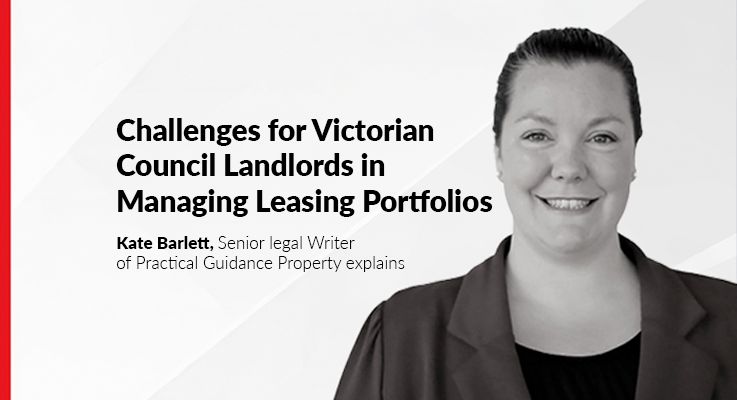Capital Monitor™ Editorial by Keely Garcia A single week in November 2023 saw four women lose their lives in South Australia amid domestic and family violence, an alarming record across any Australian...
Artificial intelligence is transforming the legal industry, there’s no doubt about that, but the conversation is shifting from chatbots and generative AI to something far more powerful: agentic AI. The...
In today’s fast-paced legal environment, the pressure to produce high-quality work quickly is intensifying. Yet, the very digital tools meant to boost productivity are often doing the opposite. Lawyers...
Companion animals now recognised as more than property in family law decisions. On 10 June 2025, major reforms to Australia’s Family Law Act 1975 (Cth) came into effect. For the first time, Australian...
Australian lawyers have a reputation for being pragmatic; and this trait shows when the conversation turns to artificial intelligence. There’s no blind rush to adopt the latest shiny tool, no “AI or...

Managing a large and varied leasing portfolio can be challenging for any landlord. Most landlords managing large portfolios use digital tools to manage various aspects of their leasing portfolios (eg, processing maintenance repairs and requests, tracking outgoings and rental payments and invoicing for such items). Increasingly, commercial, institutional and other large-scale landlords are also using digital tools to help them navigate the legal issues they regularly encounter with their tenants and in leasing their assets. Due to various factors, council landlords arguably have a greater need for such tools.
As owners of important community facilities and owners and managers of public land within our communities, councils tend to have a wider range of premises types within their portfolio than other landlords. Councils also often have many and varied tenants – from small and large sporting and recreation clubs to large commercial and not-for-profit operators within the health and community care industries, to cafes and small retailers, to private and public entities undertaking construction activities, to community groups co-located within community or municipal facilities. Even with internal legal, property and facilities management professionals, managing such a varied pool of tenants and premises types presents resourcing challenges and creates an ongoing demand for input from all such professionals on leasing-related issues. Sometimes, that demand increases exponentially, such as we saw during the COVID-19 pandemic where tenants and their businesses were severely disrupted and landlords had to adapt and contend with a fast-changing regulatory environment. In such situations, access to reliable guidance on leasing issues and on regulatory changes and is critical.
Councils balance more competing priorities than most other landlords managing similarly-sized leasing portfolios. Councils must manage their leasing portfolios in a way that is consistent with specific laws regulating them and the use of the land under their control. Councils also must comply with their own governance rules and community engagement and public transparency policies, and manage their leasing portfolios within the confines of a statutory framework which imposes lease term limits and also curtails a council’s power to lease land until forward-budgetary planning and/or community engagement processes are completed. For some types of premises, there are additional statutory requirements when entering into the lease, and, for some others, legislation and state government policies that require ministerial approval before entering into a lease, set shorter lease term limits, require the use of standard state government template leases and impose additional requirements for selecting tenants through a public competitive process.
These factors make it more critical than ever for councils to have ready access to the right tools to help them manage their leasing portfolios and navigate issues as they arise with their tenants.
LexisNexis Practical Guidance - Property is one such tool. It has detailed guidance notes and checklists on managing leasing workflows and understanding leasing issues, and it has leasing precedents to help councils manage their leasing portfolios, today and into the future, including:
- Detailed guidance notes covering all aspects of leasing in the Leases, Retail Leases and Residential tenancies topics.
- Precedent commercial lease and retail lease and other precedent leasing suite documents, including, deed of consent and assignment of lease or sublease, heads of agreement/lease proposal, deed of variation of lease or sublease, landlord’s notices of acceptance and non-acceptance of tenant’s exercise of option, landlord’s default notice to tenant, rent concession and rent review clauses and notices, and more.
- Guidance notes on managing and leasing crown land in the Crown land subtopic of the Rural transactions topic.
- Checklists relevant to leasing such as the Acting for landlord — Checklist before entering into and finalising a commercial or retail lease.
- Property Frequent Tasks Tool, which links to all of the guidance notes, checklists, precedents and forms used to guide legal and property practitioners through completing each of the most frequent tasks carried out in their day-to-day practice.
- Signing tool, an easy-to-use tool that quickly produces signature blocks for agreements or deeds.
- COVID-19 Property Toolkit, a guide to the legal developments in commercial and retail leasing (as well as sales and purchases and other property-functions), with links to necessary resources, precedents and other critical information.
- Latest Legal Updates providing prompt and practical guidance about legal developments, regulatory changes and topical property issues.
For more information, see the Leases and Retail Leases Topics on LexisNexis Practical Guidance - Property.
For more information, contact your Relationship Manager or visit the LexisNexis Practical Guidance - Property homepage on our Practical Guidance website.




